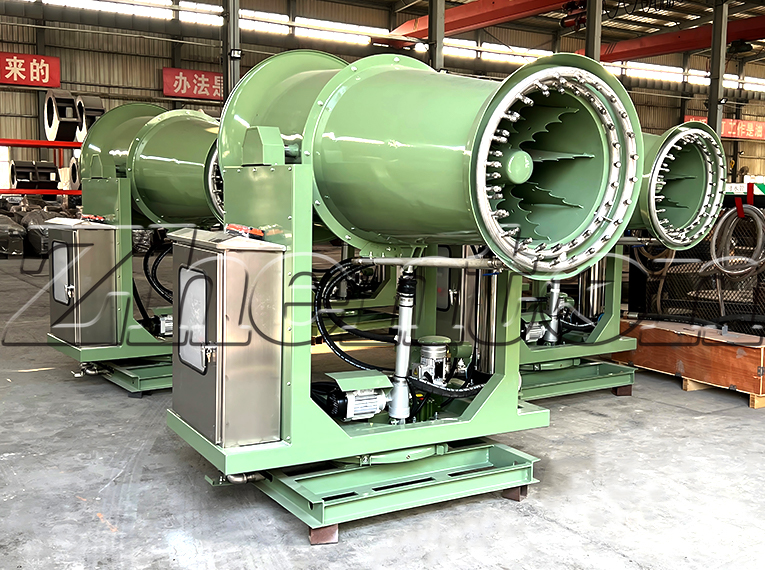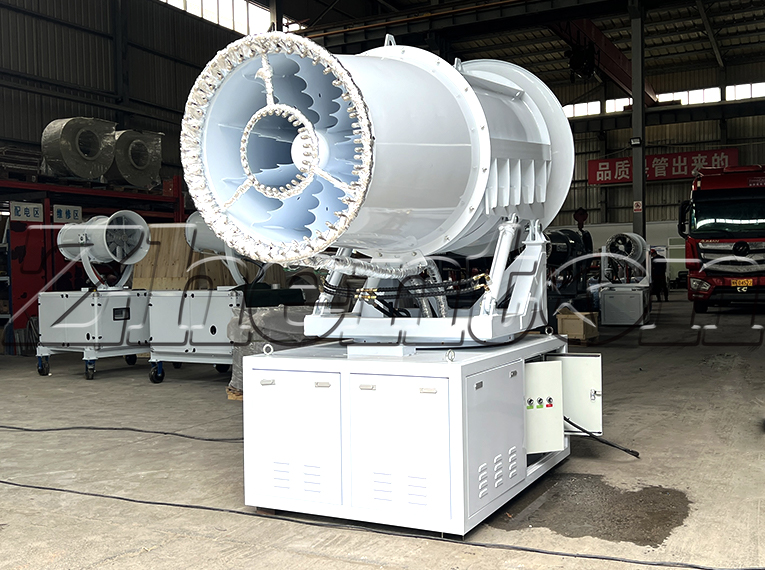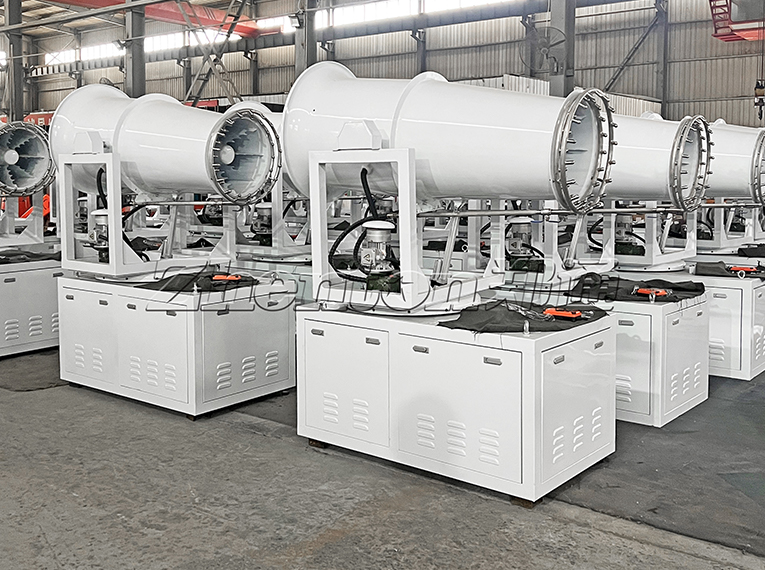The material selection of an anti-smog gun is a crucial factor, as it directly affects the equipment's performance, durability, and service life. Below, Zhenton Anti-Smog Gun Manufacturer will take you through a detailed understanding of common anti-smog gun materials and key selection points.
I. Main Materials for Anti-Smog Guns
1. FRP (Fiberglass Reinforced Plastic)
Properties: High strength, corrosion resistance, light weight, easy construction, and diverse shapes. FRP has a smooth surface, making it easy to clean and maintain. However, its strength is relatively low; it is not resistant to high temperatures and high pressures, and its service life is relatively short.
Applicable Scenarios: Suitable for occasions that have certain requirements for weight and corrosion resistance but do not need to withstand high temperatures and high pressures.
2. Stainless Steel
Properties: Excellent corrosion resistance, allowing long-term use in harsh environments without oxidation, rusting, or similar issues. At the same time, stainless steel has high strength and an elegant appearance, but it is relatively hard, which may pose safety hazards in some specific scenarios.
Applicable Scenarios: Suitable for occasions where long-term operation in harsh environments is required, such as coastal areas and chemical plants.
3. Aluminum Alloy
Properties: Lightweight, high hardness, strong corrosion resistance, and good thermal conductivity. Aluminum alloy is light in weight, easy to process and transport, and has excellent corrosion resistance and wear resistance. It can also maintain its strength and toughness in extreme environments such as high temperatures and high pressures. However, the strength of aluminum alloy is relatively low, making it less suitable for working conditions that require withstanding high pressure and heavy loads.
Applicable Scenarios: Suitable for occasions that require portability and corrosion resistance, such as mobile anti-smog guns.
4. Steel Plates (e.g., Q235, Q345, 304 Stainless Steel)
Properties: High strength and good corrosion resistance. Steel plate air ducts and bases can withstand relatively high pressure and loads, while also having a certain level of corrosion resistance.
Applicable Scenarios: Suitable for fixed or tower-type anti-smog guns, as well as occasions that need to withstand high pressure and heavy loads.

II. Key Points for Selecting Anti-Smog Gun Materials
1. Application Scenario
Choose the appropriate material based on the anti-smog gun’s usage scenario. For example, in harsh environments like coastal areas or chemical plants, stainless steel or FRP (which have good corrosion resistance) should be selected; for occasions requiring portability and corrosion resistance, aluminum alloy can be chosen.
2. Performance Requirement
Select the material according to the anti-smog gun’s performance needs. For instance, fixed or tower-type anti-smog guns that need to withstand high pressure and heavy loads should use high-strength steel plates; mobile anti-smog guns, on the other hand, can use lighter aluminum alloy.
3. Cost Consideration
Anti-smog guns made of different materials have different costs. It is necessary to comprehensively consider cost factors while meeting performance requirements.
4. Maintenance
Take into account the ease of maintenance of the material. For example, FRP has a smooth surface and is easy to clean and maintain; although stainless steel has excellent corrosion resistance, its high hardness may require special attention to safety in some cases.

In summary, the material selection of an anti-smog gun needs to be comprehensively considered based on various factors such as the specific application scenario, performance requirements, and cost considerations. When making a selection, it is recommended to consult professional equipment suppliers or manufacturers to obtain more specific and professional advice.
Next
No Data!











